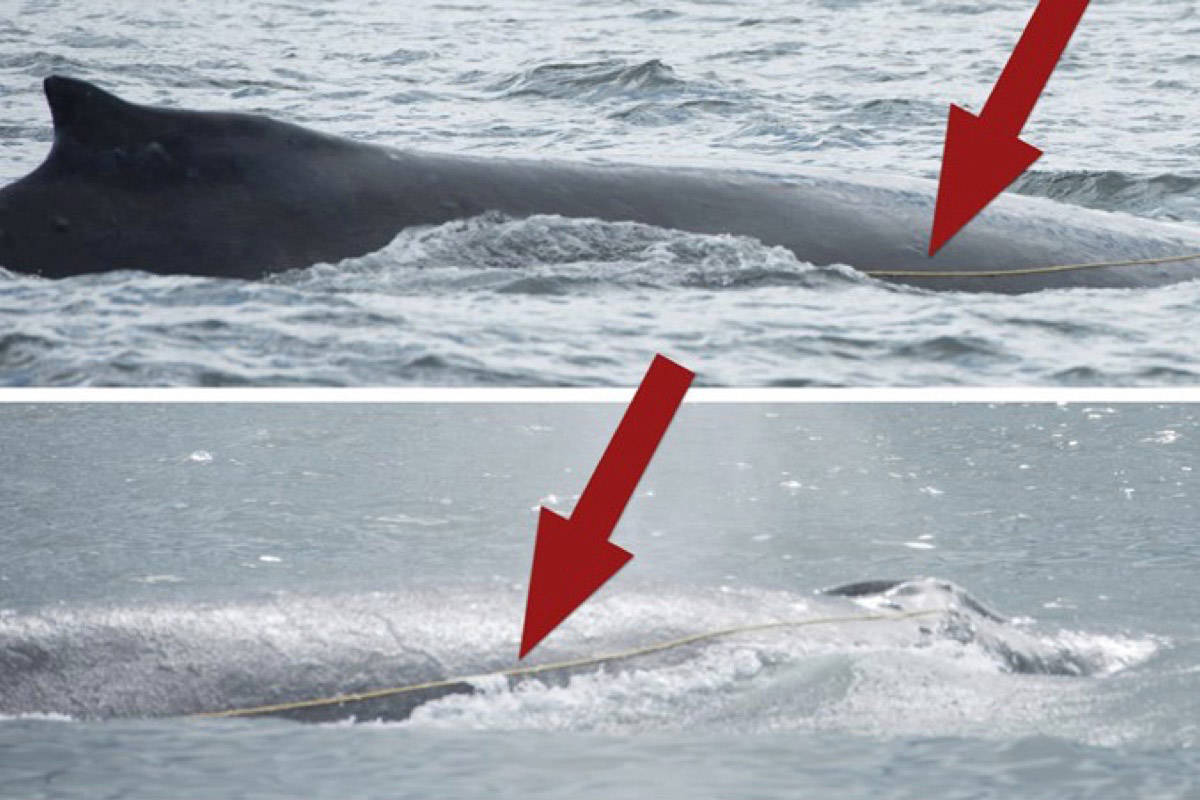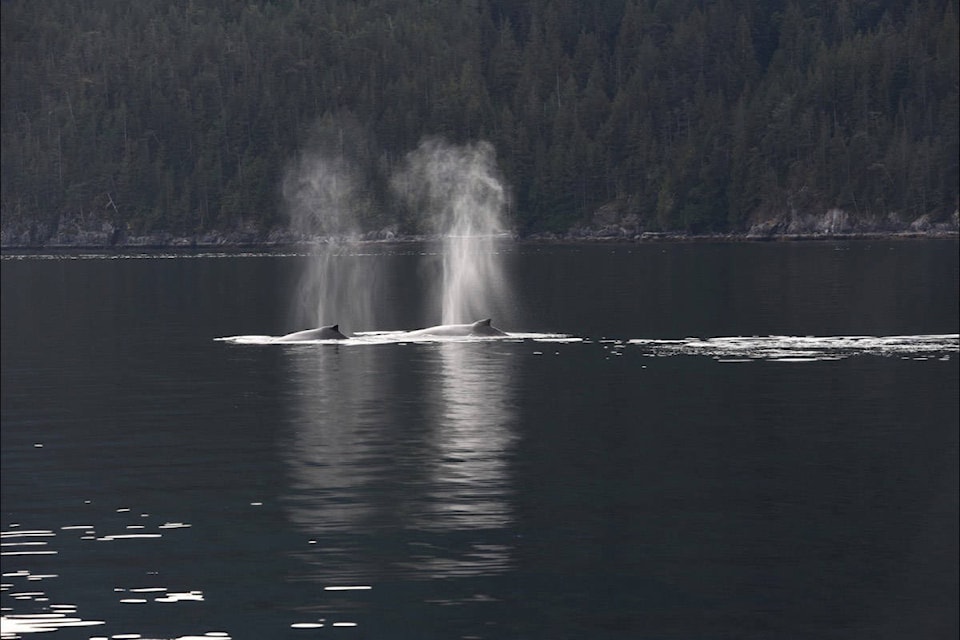A humpback whale known to spend time around Campbell River may no longer be entangled.
According to the Marine Education and Research Society (MERS), ‘PHI’ was last spotted July 31 off the coast of Washington State. The yellow rope that was previously photographed in her mouth is no longer visible.
This could be good or bad news, says humpback whale researcher Jackie Hildering.
“Did the rope in her mouth somehow fall out where it had been so firmly embedded previously? Or has it shifted where it just cannot be seen,” wrote Hildering in an email to Black Press.
The good news is that PHI, who was previously seen heading for remote waters north of Vancouver Island, is now in an area where there are more people equipped to help her if she is in fact still entangled.
RELATED: Attempts to disentangle humpback off north Vancouver Island fail
“She is again where there are those who have the skill to recognize who she is and can monitor her,” said Hildering. “That’s so much better than her having continued north to more remote areas.”
According to MERS, PHI’s entanglement was first observed on July 23 in the Campbell River/Quadra Island area.
A specialized team from the Department of Fisheries and Oceans attempted to disentangle the whale over two days, but ran out of daylight nort of Sayward.
RELATED: Humpback whale safety campaign launched as population booms on B.C. coast
PHI was once again spotted on July 25 near Port McNeill, where a response team attempted to attach a grapple and tag onto her, but again ran out of daylight north of Port Hardy.
The entanglement was complicated as no rope or netting was trailing behind the whale, said Hildering, who helped nickname the whale after the markings on her tail, which look like the letters P, H and I.
Response teams are normally able to attach a tracker to the gear trailing from the whale or attach flotation to slow them down.
While entanglements might not put whales at risk right away, over time they could lead to chafing and infection.
“There’s a perception by people that whales are in immediate risk when they’re entangled,” Hildering told Black Press last week. “Most often it’s the long-term impacts of entanglement; the fact that they can’t move properly, they can’t feed properly.”
PHI was already an adult when she was first documented near Victoria in 2014.
It appears she is swimming in familiar waters once again.
Entangled whales should be reported “with great urgency” to the DFO incident line at 1-800-465-4336 or using VHF Channel 16 if outside of cell service, said MERS.
For more information on what to do if you spot an entangled whale, visit howtosaveawhale.org.
@marissatiel
marissa.tiel@campbellrivermirror.com
Like us on Facebook and follow us on Twitter.

